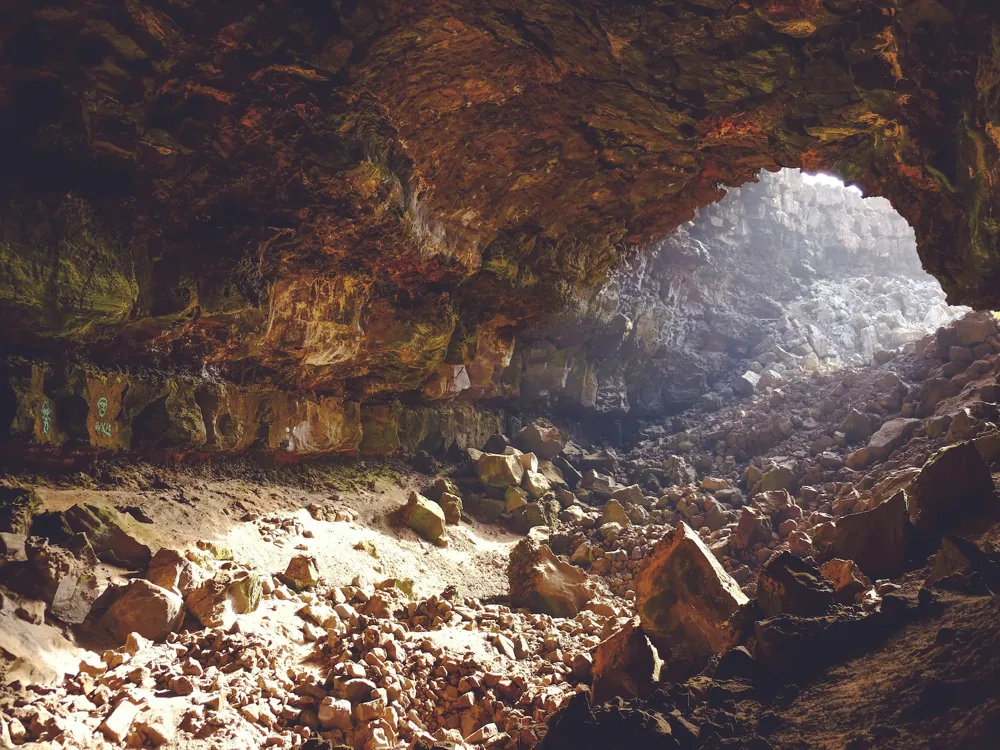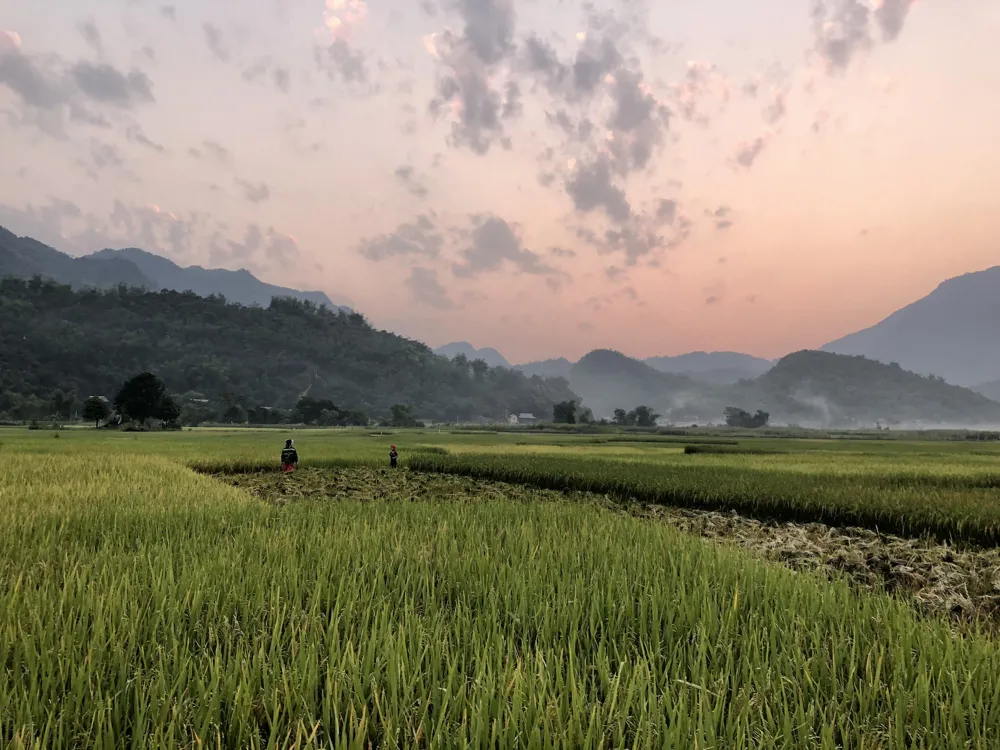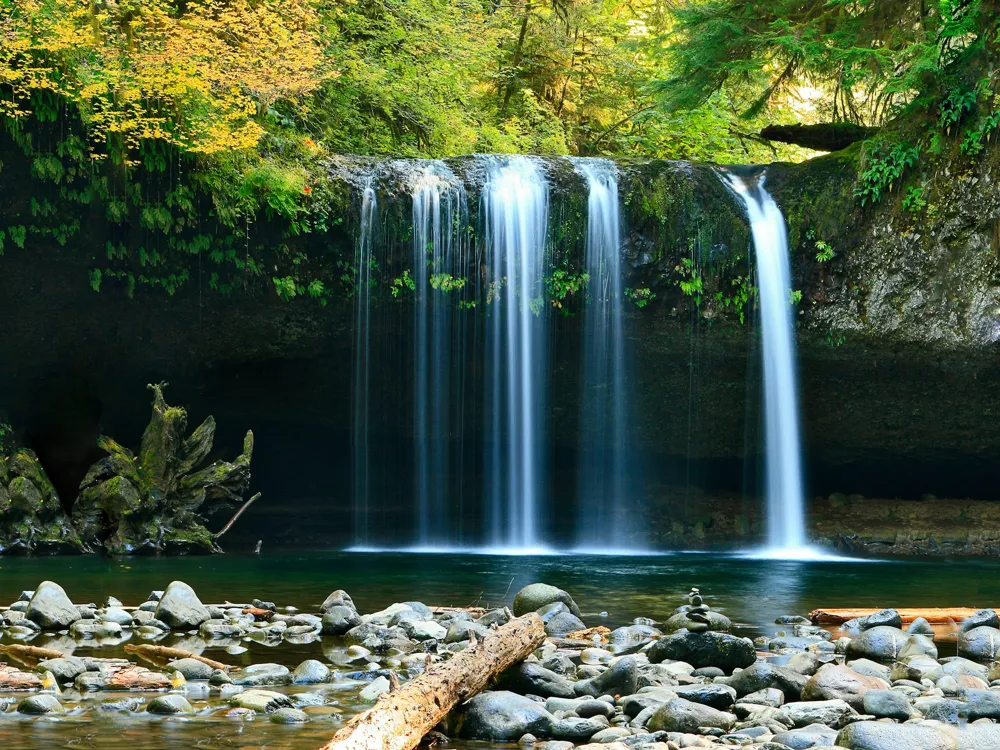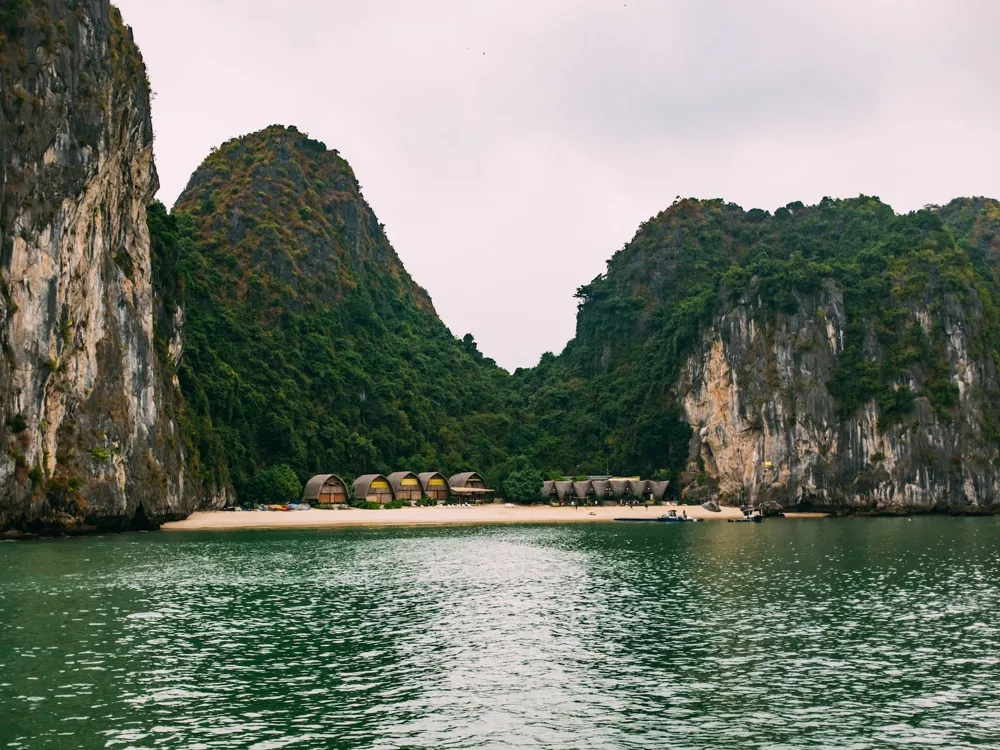Da Bac Cave, a hidden gem located in Hoa Binh province of Vietnam, stands as a testament to the awe-inspiring beauty of nature. This natural wonder, embedded in the heart of a mountain, is a magnificent display of geological formations and a rich historical tapestry that dates back thousands of years. The cave is renowned for its spectacular limestone structures, which have been sculpted over centuries by natural processes. Its vast chambers and intricate pathways are a paradise for adventurers and nature enthusiasts alike. The journey to Da Bac Cave is as enchanting as the destination itself. The surrounding landscape of Hoa Binh province, characterized by lush greenery and tranquil waters, sets the tone for an extraordinary adventure. Upon entering the cave, visitors are greeted by a cool, mystical atmosphere that contrasts starkly with the tropical climate outside. The cave's interior reveals an array of stunning stalactites and stalagmites, each telling a unique story of geological marvels and the passage of time. Da Bac Cave is not only a natural spectacle but also a cultural treasure. The cave has been a part of local folklore and legends, adding to its mystical allure. It has served as a place of worship and spiritual significance for the local communities. This blend of natural beauty and cultural richness makes Da Bac Cave a must-visit destination for those seeking to explore Vietnam's natural wonders. The architecture of Da Bac Cave is a stunning display of nature's artistry. Over millions of years, the limestone formations within the cave have evolved into spectacular shapes and sizes, creating a surreal landscape that captivates its visitors. The cave's architecture is characterized by three primary features: its vast chambers, intricate pathways, and unique rock formations. The chambers of Da Bac Cave are expansive and varied in size, each offering a different experience. Some chambers are so large they feel like underground cathedrals, with high ceilings and wide-open spaces. These chambers are often adorned with massive stalactites hanging from the ceiling, creating a dramatic and awe-inspiring sight. The light filtering through the cave openings plays with the colors of the rocks, adding to the mystical ambiance. Connecting these chambers are a series of pathways and tunnels. These pathways range from wide and easy to navigate to narrow and challenging, offering something for every level of adventurer. The walls of these pathways are lined with intricate rock formations, some smooth and flowing, others sharp and jagged, showcasing the diverse effects of geological processes. The rock formations within Da Bac Cave are its most remarkable feature. Stalactites and stalagmites of various shapes and sizes fill the cave, some meeting in the middle to form pillars. These formations come in a range of colors, from pure white to rich reds and browns, depending on the minerals present in the rock. The constant dripping of water adds to the cave's ambiance, as each drop contributes to the ever-evolving landscape. The architecture of Da Bac Cave is not only a feast for the eyes but also a testament to the passage of time and the power of nature. It serves as a natural museum, showcasing the beauty and complexity of geological processes. For those interested in geology, adventure, or simply the beauty of the natural world, Da Bac Cave is a destination that should not be missed. Before embarking on your journey to Da Bac Cave, it's essential to be well-prepared. Wear comfortable clothing and sturdy footwear suitable for hiking. The cave's terrain can be slippery and uneven, so it's important to have good grip shoes. Additionally, bring a reliable flashlight or headlamp, as some parts of the cave are dimly lit. Always stay on marked paths and be aware of your surroundings to ensure safety. The ideal time to visit Da Bac Cave is during the dry season, which typically runs from November to April. During this period, the weather is more stable, and the risk of heavy rains, which can cause flooding in the cave, is minimal. The cooler temperatures during these months also make for a more comfortable exploration experience. Consider joining a guided tour for a more informative experience. Local guides are knowledgeable about the cave's history, geology, and ecology. They can provide insights into the cave's formation and point out interesting features that you might otherwise miss. Additionally, they can ensure that you explore the cave safely and responsibly. Da Bac Cave offers numerous photogenic spots, but it's important to be mindful of photography etiquette. Avoid using flash photography as it can disturb the natural environment and wildlife within the cave. Also, be cautious not to touch or damage the rock formations while setting up your shots, as they are delicate and take thousands of years to form. To reach Da Bac Cave, you can start your journey from Hanoi, the capital city of Vietnam, which is approximately a 3-hour drive away. The most common way to reach the cave is by road, either by renting a car or taking a bus. Buses from Hanoi to Hoa Binh are frequent, affordable, and comfortable. Once in Hoa Binh, you can hire a local taxi or a motorbike taxi to take you to Da Bac Cave. For those looking for a more adventurous route, trekking or cycling to the cave from nearby towns is also a popular option, offering a chance to experience the stunning landscapes of Vietnam up close. Read MoreOverview of Da Bac Cave
Architecture of Da Bac Cave
Tips When Visiting Da Bac Cave
Preparation and Safety
Best Time to Visit
Guided Tours
Photography Etiquette
How To Reach Da Bac Cave
Da Bac Cave
Hoa Binh
NaN onwards
View hoa-binh Packages
Weather :
Tags : Cave
Timings : All - Day
Time Required : 1 - 2 hours
Entry Fee : Free
Planning a Trip? Ask Your Question
Hoa-binh Travel Packages
View All Packages For Hoa-binh
Top Hotel Collections for Hoa-binh

Private Pool

Luxury Hotels

5-Star Hotels

Pet Friendly
Top Hotels Near Hoa-binh
Other Top Ranking Places In Hoa-binh
View All Places To Visit In hoa-binh
View hoa-binh Packages
Weather :
Tags : Cave
Timings : All - Day
Time Required : 1 - 2 hours
Entry Fee : Free
Planning a Trip? Ask Your Question
Hoa-binh Travel Packages
View All Packages For Hoa-binh
Top Hotel Collections for Hoa-binh

Private Pool

Luxury Hotels

5-Star Hotels

Pet Friendly





















